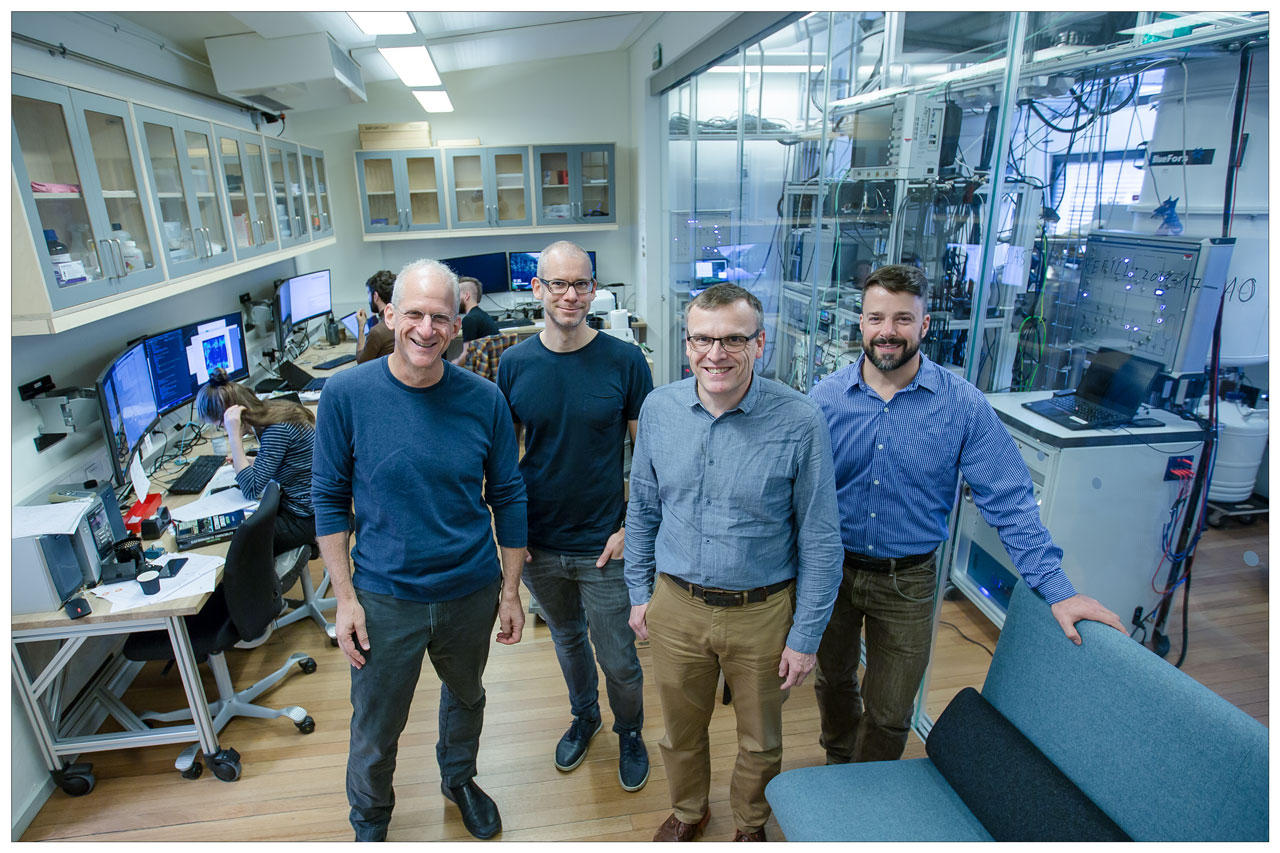The Niels Bohr Institute to Research Particle with Great Potential in the Construction of the Quantum Computer
For many years physics has been on the search for knowledge on the special particle, “the Majorana particle”, which has potential to be applied in future quantum computers. Researchers from the Niels Bohr Institute, University of Copenhagen and Lund University in Sweden have now, with a European Research Council Synergy Grant, become able to do the necessary fundamental research needed for affirming the potential the researchers hope to find.

It takes fundamental research, before results can be expected
The grant from European Research Council allows Karsten Flensberg, Ferdinand Kuemmeth, Martin Leijnse and Charlie Marcus, Scientific Director of Microsoft Quantum Lab Copenhagen, to research the Majorana particle.
Researchers all over the world work to make the quantum computer take over the heaviest computational tasks and break the deadlock in conventional computers. The experimental lab is supported by the Danish National Research Foundation and Microsoft.
This is where the Majorana particle could be a determining factor, as it is believed to be able to remember information better than ordinary transistors. There is a way to go yet before this new knowledge can be applied to electronics, and fundamental research needs to provide the groundwork first.
“Our dream scenario is to discover that the properties of the Majorana particle do actually exist in reality. That would mean we’ve become rather a lot wiser, as discovering and verifying a new kind of material and new conditions could truly change our fundamental understanding of what nature allows us to do”, says Professor Karsten Flensberg from the University of Copenhagen.
He received the grant along with a group of researchers from QDev, Center for Quantum Devices at the Niels Bohr Institute and researchers from Lund University.
The collaboration spans even more people, as Professor Peter Krogstrup, Scientific Director of Microsoft Quantum Materials Lab in Lyngby, north of Copenhagen, and Michael Manfra at Purdue University, Indiana, USA, have already contributed in the past, and will be contributing to the project in the future.
The Majorana particle has better memory
The research project must verify whether the Majorana particle possesses the properties the researchers are anticipating. In theory, the Majorana particles behave in a certain way when switched around.
The switching alters the entire system of particles the particle is part of. This is a fundamentally different property from all other known particles, which only alter their immediate surroundings through switching.
“It is a particular property for a particle, which we call a non-local property. It could potentially handle and protect quantum information in future quantum computers”, says Karsten Flensberg.
Former development of superconductors at the Niels Bohr Institute is a precondition for the project
From the outset, the project has had the development of a new type of super conductors at the Niels Bohr Institute as a precondition. These superconductors can conduct electrons without disturbing them. This specific quality enables the study of Majorana particle existence and function.
The super conductor works only in close proximity to the absolute zero, and experiments must take place in cryo freezers at a temperature of -273 degrees Celsius. Under these conditions the researchers will send an electrical current through the super conductors and “force” the Majorana particles to do advanced switching.
One switch takes a micro second and many thousands of them must be made in different combinations, which will be turned into vast amounts of data, handled by computers.
Topics
See also:
Contact
Karsten Flensberg
Professor
Niels Bohr Institute
flensberg@nbi.ku.dk
Mobile: +45 25 13 29 69
Nanna Birk
Pressofficer
nbj@science.ku.dk
Mobile: +45 93 51 60 02
